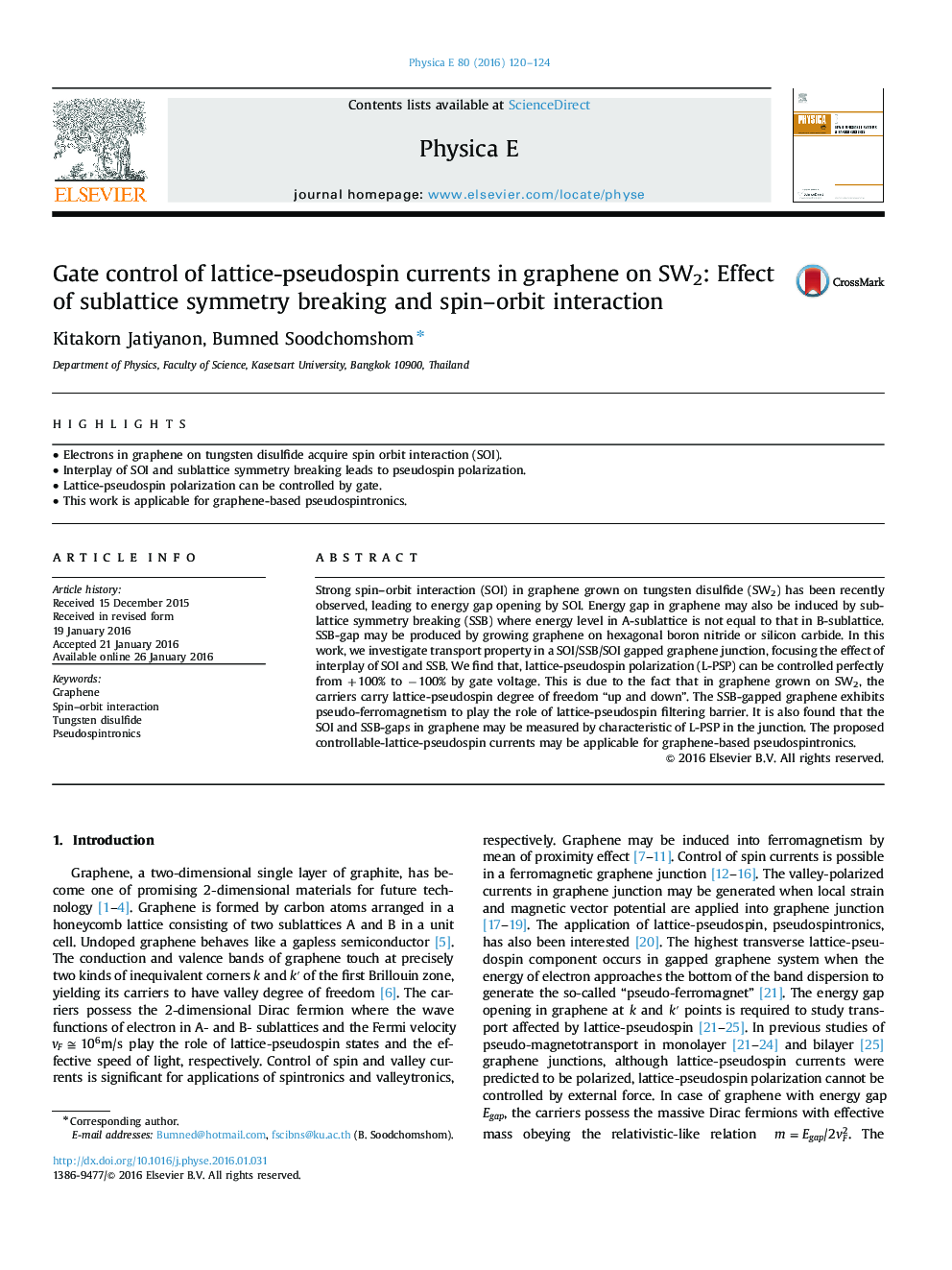| Article ID | Journal | Published Year | Pages | File Type |
|---|---|---|---|---|
| 1543722 | Physica E: Low-dimensional Systems and Nanostructures | 2016 | 5 Pages |
•Electrons in graphene on tungsten disulfide acquire spin orbit interaction (SOI).•Interplay of SOI and sublattice symmetry breaking leads to pseudospin polarization.•Lattice-pseudospin polarization can be controlled by gate.•This work is applicable for graphene-based pseudospintronics.
Strong spin–orbit interaction (SOI) in graphene grown on tungsten disulfide (SW2) has been recently observed, leading to energy gap opening by SOI. Energy gap in graphene may also be induced by sublattice symmetry breaking (SSB) where energy level in A-sublattice is not equal to that in B-sublattice. SSB-gap may be produced by growing graphene on hexagonal boron nitride or silicon carbide. In this work, we investigate transport property in a SOI/SSB/SOI gapped graphene junction, focusing the effect of interplay of SOI and SSB. We find that, lattice-pseudospin polarization (L-PSP) can be controlled perfectly from +100% to −100% by gate voltage. This is due to the fact that in graphene grown on SW2, the carriers carry lattice-pseudospin degree of freedom “up and down”. The SSB-gapped graphene exhibits pseudo-ferromagnetism to play the role of lattice-pseudospin filtering barrier. It is also found that the SOI and SSB-gaps in graphene may be measured by characteristic of L-PSP in the junction. The proposed controllable-lattice-pseudospin currents may be applicable for graphene-based pseudospintronics.
